Beacons of Badassery is an interview series shining light on strong women.
After spending most of my life trying to prove that I’m strong enough to be one of the guys, I’ve realized that instead of trying so hard to fit a certain expectation, we should be redefining what it actually means to be strong.
These women are doing just that.
Beacon of Badassery: Faith E. Briggs
Following a rabbit hole in the search for work in the outdoor industry, I stumbled across the Columbia Directors of Toughness position – and was introduced to Faith Briggs. Since then I’ve been constantly inspired and entertained by her adventures on Instagram. Her laughter is contagious, and her self-reflection is honest and real, so I’m excited to share her thoughts on toughness, representation, and more here.

Why did you apply for the Columbia Director of Toughness position? Have you always considered yourself tough & strong? What has led you to feel that way?
I applied for the Director of Toughness position on a whim, and I never expected to be selected for the position. In fact, when selected, I was so shocked and overwhelmed about the idea of quitting my full-time job and moving across the country that I kind of ghosted for a few days amid inner turmoil. It was obviously the opportunity of a lifetime, and the process of leaving my old job, while missing the people, and not looking back has been a real opportunity for growth. It was a difficult process, but it’s been so incredible that it’s hard to believe I almost said no!
I’ve always considered myself tough and strong, yes, because I was an active kid and tomboy. I could do more pull ups than most of my class in PE, but then I could barely touch my toes. Haha, so strength was always a part of my identity, but not in an outdoor adventure sense. I’m a runner, and I’ve always thought about building strength in order to be a better runner, but I always had a sprinter mindset. Moving into the outdoors is inevitably in many ways moving to endurance activities, and that requires a different kind of toughness.

What was your favorite adventure you went on in this position? What was the most difficult challenge?
There was something incredible about everything that we did with Columbia. One of my favorite experiences was trekking in Colombia with the permission and guidance of a village of Kogui indigenous people. It was something I could never have imagined and being able to learn from them about their spiritual connection with the mountains and the rituals they have related to mindfulness was incredible. It was really transformative. Even without speaking the same language and going through multiple rounds of translation, I think we all still felt really connected and extremely lucky to be in that place.
One of the most difficult challenges was actually also in Colombia. We were backpacking for six days, and I was having trouble keeping up. My pack was heavy, and I kept falling behind. At one point I got lost, only for about 30 mins, but I took a wrong turn, and ended up at these abandoned houses…haha, and the reason I got lost was because I was sick and throwing up. So in the time that I was throwing up onto a Go Pro on this path, people didn’t notice and walked ahead down the trail, and I didn’t know where they had gone. Behind the scenes I was throwing up every time I tried to drink water for two days and fighting against my crew’s attempts to make me ride a mule. So…keeping up the mental stoke, being kind to myself, not letting myself feel like I was holding back the group and just being okay with spending six to ten hours on my feet day in and day out walking by myself, that was tough. It gave me a small insight into how thru-hikers must feel, and I don’t know how they do it. Much much respect. I think sometimes that’s the most difficult challenge, being in control of your own thoughts, staying healthy and stoked in your head.
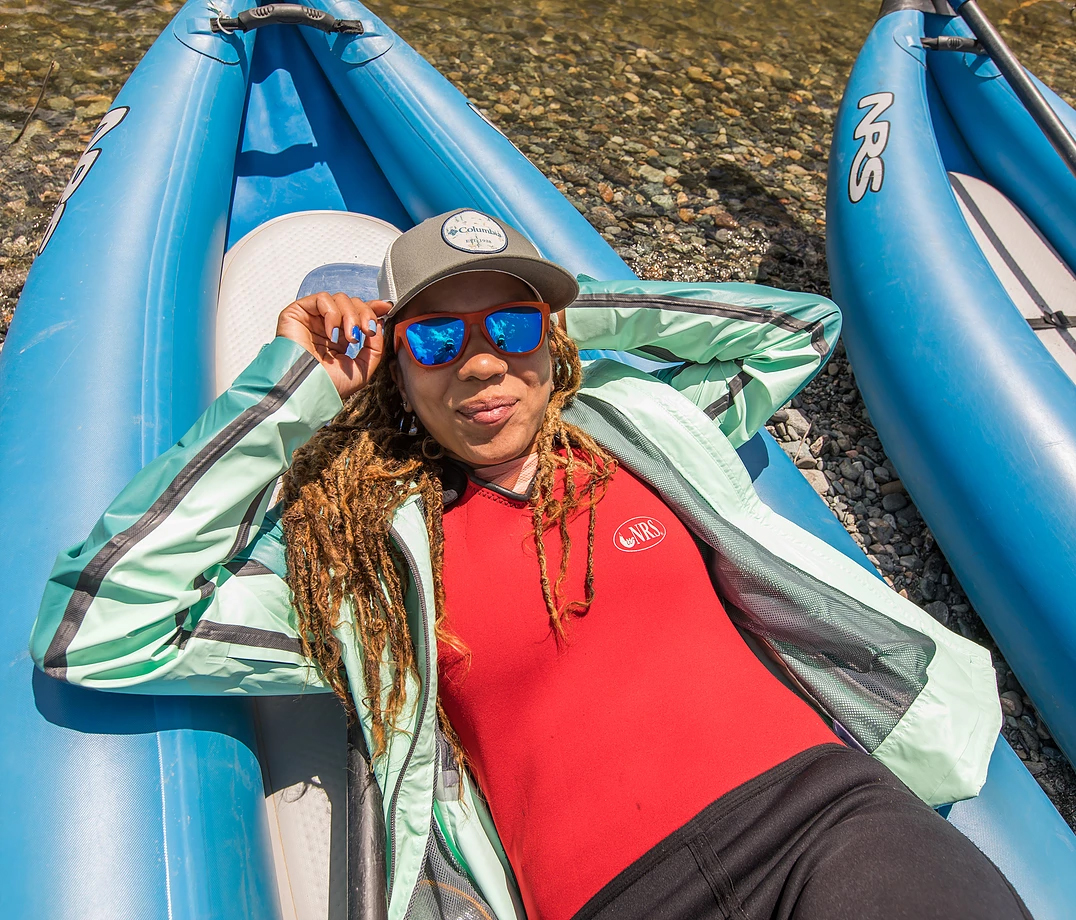
What is your definition of strong? How has it evolved through your experiences as the Director of Toughness and all your other athletic activities and outdoor adventures?
Oh gosh, the words tough and strong, I get them, and they are important, but one of the earliest learnings for the whole crew at Columbia was that I didn’t have a tough face. “Faith, look tough!” just ended in me laughing, and when I try to look tough, I’m holding back laughs. All to say that, strength and toughness, I just think it’s an inner thing, and it varies from person to person. I think trying, that’s strength. Doing something for a greater purpose and not just for yourself, that takes strength. Doing something folks don’t think you can do, something you don’t think you can do, that takes strength. But it’s not always the badass woman at the top of the mountain, that’s not the only definition of what it means to be strong. I love the outdoor world, and I love that kind of imagery, because that badass woman at the top of the mountain can be so inspiring. I just don’t want it to be the only imagery that exists. I think my definition of strength evolved in that way throughout this experience. I come from the world of track and field, its about speed, about being the best, about winning. The exposure to the outdoor world this year has challenged that…sometimes it’s just about the doing. It’s not about the winning, it’s about doing something and discovering your own mental toughness, your own limits along the way. I’ve loved being able to think about and explore the idea of mental toughness more this year.
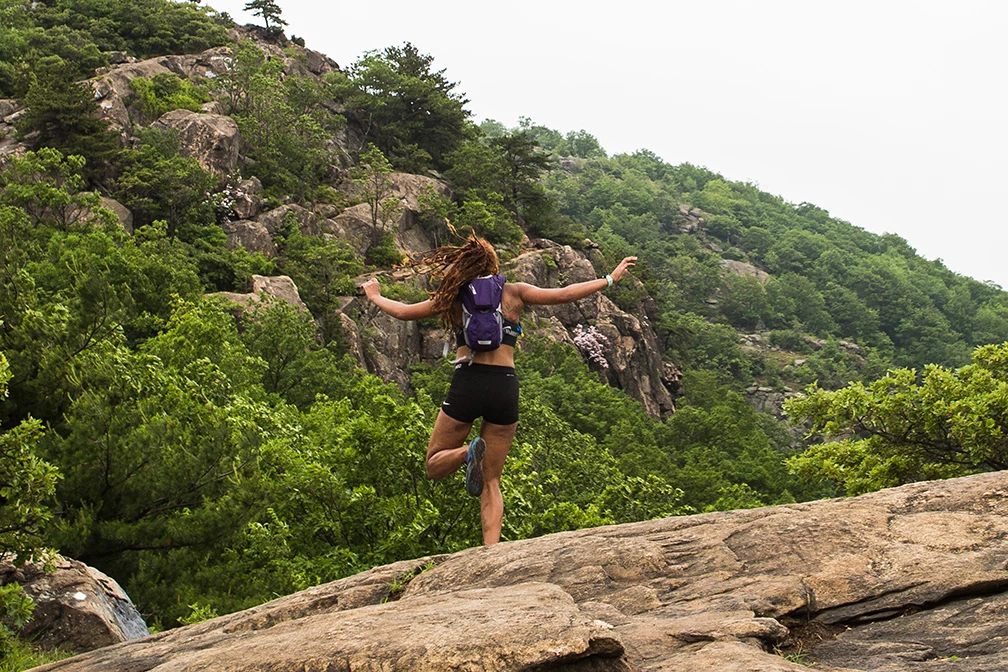
How did you get into running? Where has it taken you? And how has it changed you?
I started running when I was eleven years old. Everyone in my family ran. My mom and dad had both run track, my sister was quickly becoming a local track star. Joining the track team at age 11 was natural. I’d spent time running around during my sister’s practices for a few years before that.
I think early on, being an athlete gave me confidence. It created community and camaraderie. I was on a team, and even though I wasn’t kicking a ball directly to someone, my performance affected the outcome. And I ran on relay teams, I had to practice handoffs, and I learned to run for someone else as much as I was running for myself. I ran throughout high school and college, and it made me appreciate what my body can do, the limits I can push to. My injuries also taught me a lot. I had six stress fractures in my shins in college, and I almost quit the team. It was encouragement from my friends that brought me back, and I had to earn my way back onto the team with a lot of solo workouts. For me, the competition built character and grit. But I was always a sprinter, and I laugh now at myself then. If I ever had to run even a mile warmup in practice in college, I was livid. A 25 minute run basically put me into such a mood I would barely speak for the rest of practice. Now 25 minutes feels like not enough.
I love that running is a sport that can grow with you. Now it has taken me to Argentina and France, to Chicago and Toronto, sometimes to run, but also to cheer. I’ve cheered multiple marathons, but I’ve yet to run one. (A road marathon that is…with Columbia I had my first experiences with ultra-distances races, running two ultra marathons on trail. And I love it!) It has changed me in that I always have a way to push myself. To see what I’m made of. I always have something to try for, to hold myself accountable to. And I always have a way to decompress and reset. I just run it off.
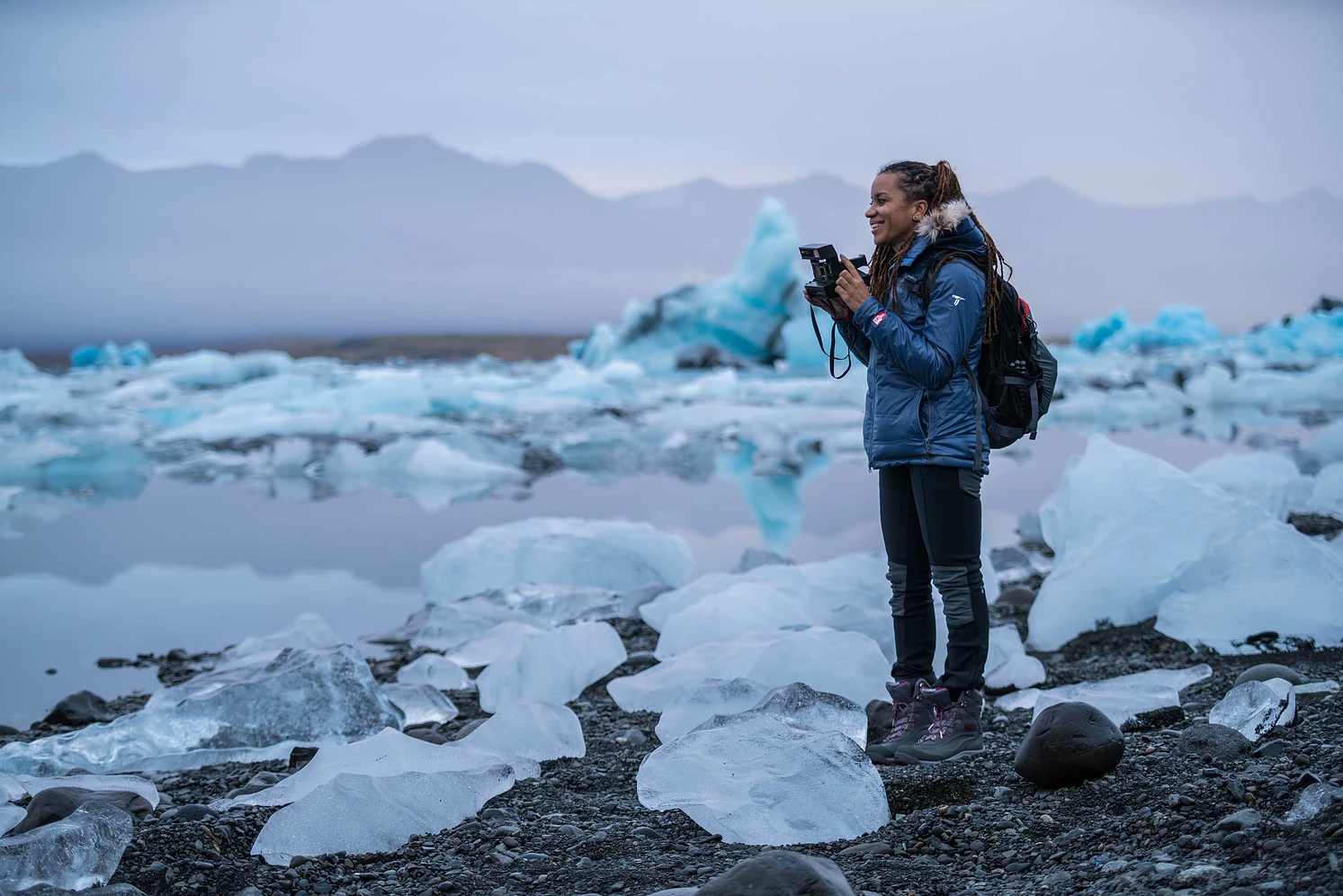
The tagline on your website is “The Art of Representation.” What does this mean for you? As a woman of color in adventure sports, do you find yourself being a role model to others?
I’ve been studying representation in media for over a decade, writing about characters in film and their significance. I love film theory and criticism, and I love the doors opening every day through films like Creed, Black Panther, Loving. The list is growing daily, and I’m ecstatic about that. The list is a lot shorter in the outdoors.
The transition from behind the lens and behind the pen to in front of the camera was jarring and unexpected. It has been so humbling and moving to hear that others have been inspired by me. That others feel seen when they see images of me. That’s what everything in this life is about to me. How do we tell stories and live lives that make others feel seen? I’m always concerned about whose stories are told, why, where and how. I think as a woman of color in adventure sports, I’ve suddenly been able to very personally impact that question. And the goal is always to shine light on others’ stories, shine a camera on them, connect them to a resource, offer an invitation to a world or a love that could change their life the way these experiences have changed mine. The art of representation is everything that surrounds the process of storytelling, and for me it’s always about who is being represented and what we are trying to say in the process.
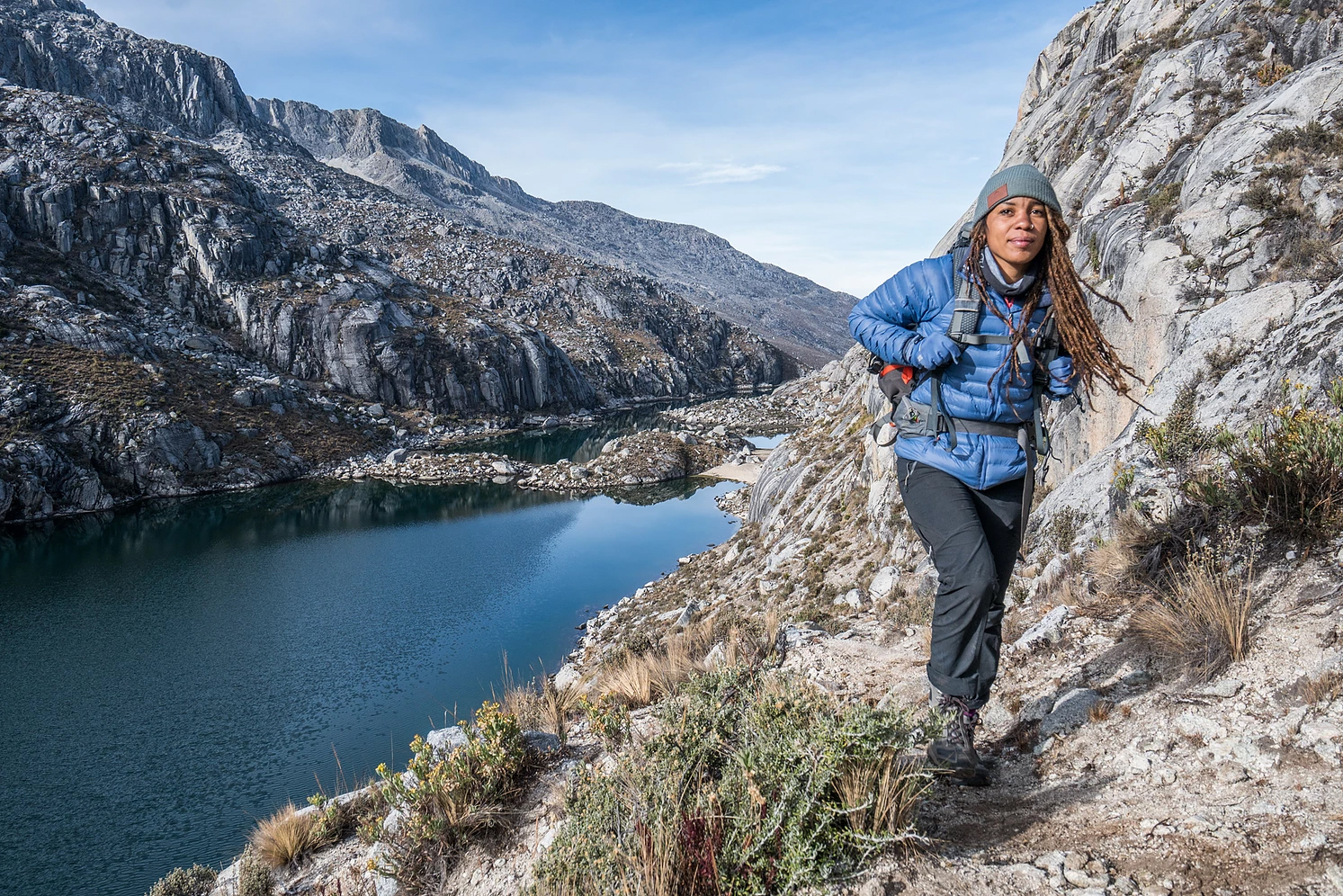
You wrote in one of your blog posts that “The outdoors is for everyone. And everyone can enjoy it differently.” How can the outdoor industry and all of us who love the outdoors help diversify the outdoors and make outdoor adventure accessible to everyone?
I’ve become very focused on the idea of offering an introduction. The barriers that exist in the outdoors are many. I think it’s the National Winter Activity Center, an organization that seeks to make winter activities accessible to children across the country, that specifies these barriers as geographic, financial, and social. I’ll add cultural as well. And what that means to me is that we need to put aside assumptions as to who wants to be in the outdoors and offer explicit introductions. We have to say hey you, women, hey you, people of color, hey you! So what if you’ve never skied before, come on out. I’ll help, first time’s on us. That’s what the brands need to do. They need to bring the activities to the communities. They need to realize that one introduction can create a lifetime enthusiast and that this is an investment that is worth making.
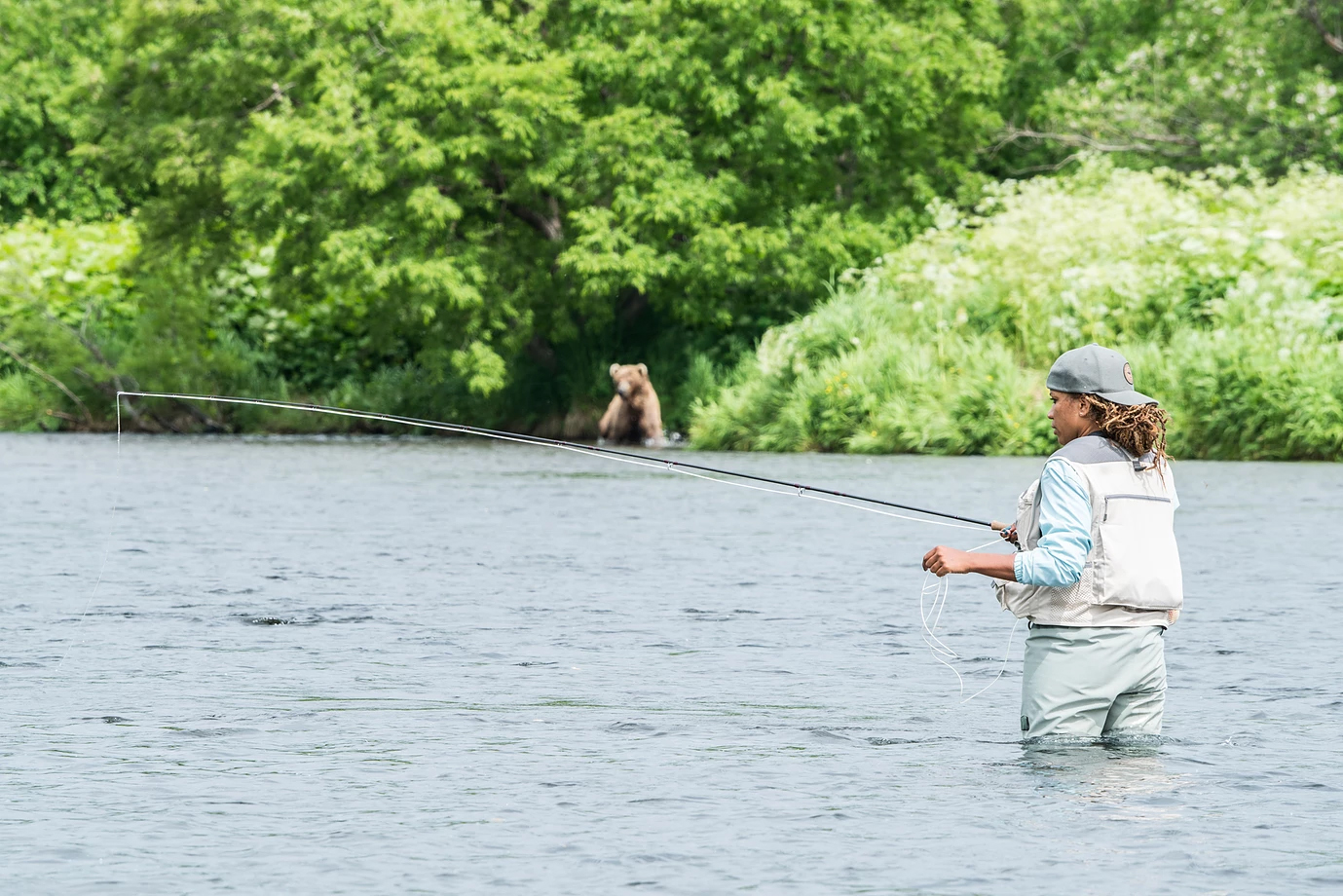
Also, we have to realize folks are out there, doing it their own way. I’ve learned this year that my family on both sides has been hunting and fishing and skiing since before I was born. I didn’t even know. I’m working on projects now with African American families whose kids have been on skis since diapers, but people don’t think they exist. We’re on Native Land but don’t even think Native communities want to mountain bike?! What makes us think that the things that we love to do wouldn’t be loved by someone else, too, they just need a chance. I think on an individual level it’s a question of “each one, teach one.” Invite a friend, use a buddy pass for someone new, run a little slower on one run and invite someone with you. Tell a story of when it was hard, break down that a “sweet sufferfest” isn’t always enjoyable the whole way around, offer to teach someone about the thing you love.
I’m new to this part of it, the what do we do now part. But I know I’m here because of the introductions I received from people who wanted to show what they love. My existence in this world is because outdoor enthusiasts took a chance on me, and they found someone who met the challenge with absolutely thrill and joy, and now I’m a lover of these activities and these places and I want to protect them. That’s why it matters that we all have access to adventure, not only because it makes us better people, but also because it allows us to create communities with shared values and a stronger voice.
Thanks so much for sharing your perspectives, Faith!
Find out more about Faith on her site, and read all about her experiences as one of the Columbia Directors of Toughness here!